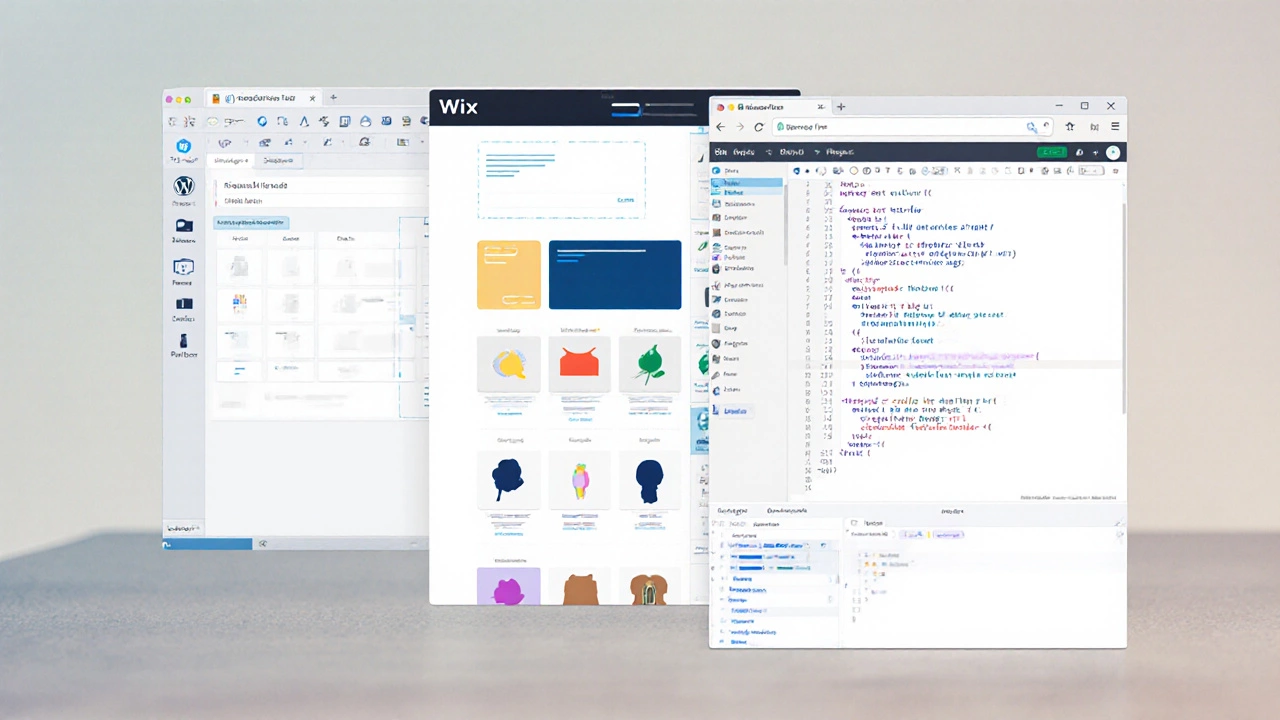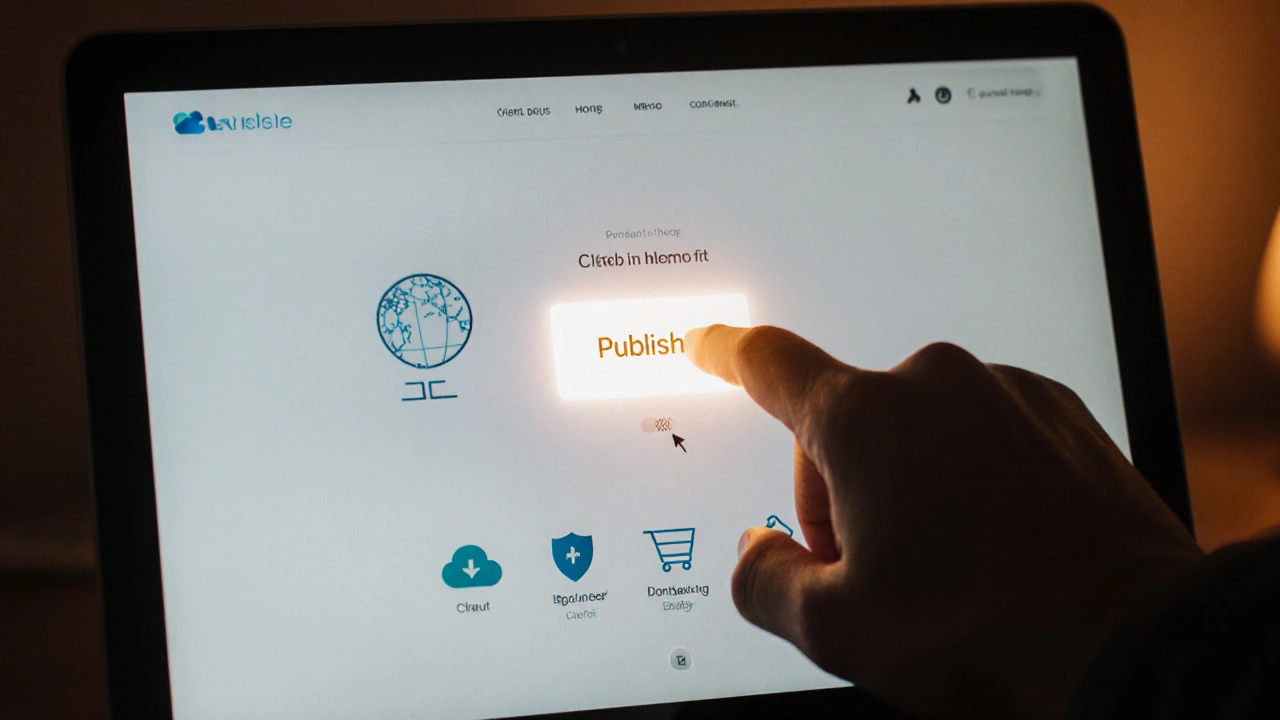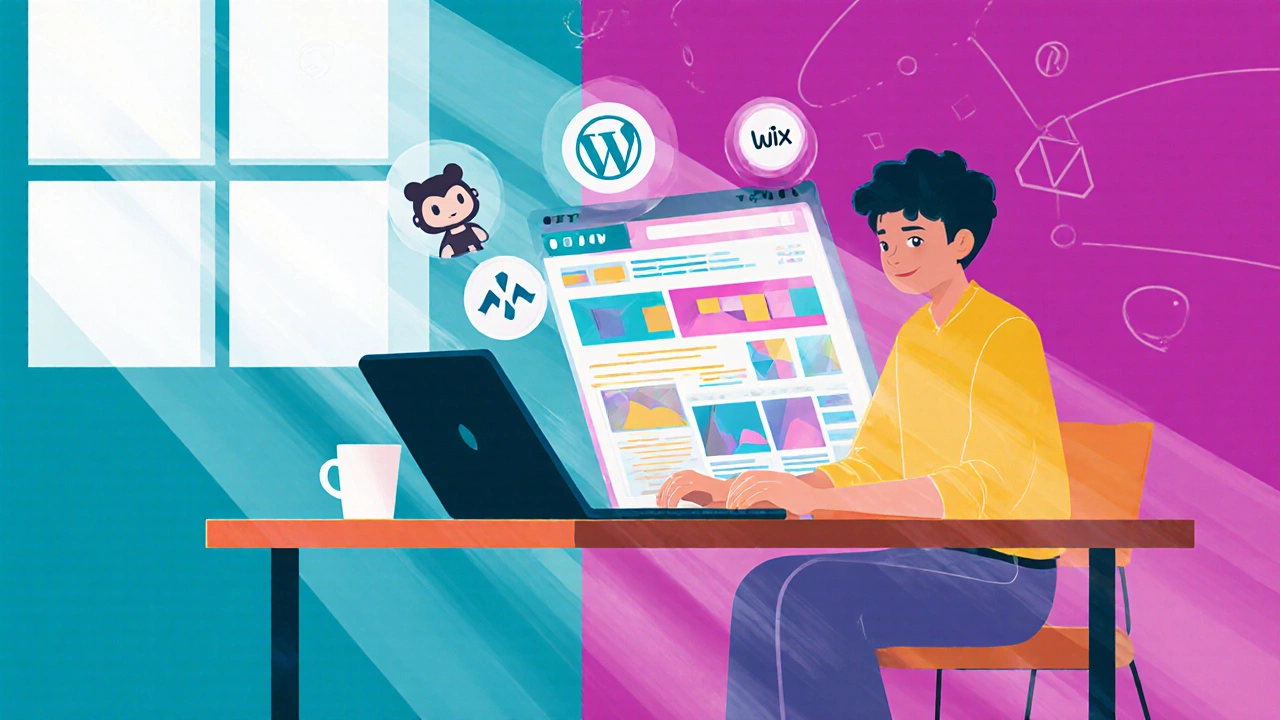Free Website Builder Comparison Tool
This tool helps you compare key features of popular free website builders to choose the best option for your needs.
Recommended Builders for Your Needs
| Builder | Sub-Domain | Storage | Ads/Branding | Ease of Use | Best For |
|---|---|---|---|---|---|
| WordPress.com | yourname.wordpress.com | 3 GB | WordPress branding | Medium | Blogs, content sites |
| Wix | yourname.wixsite.com | 500 MB | Wix ads | Easy | Portfolios, small business |
| Google Sites | sites.google.com/view/yourname | Unlimited | No ads | Very Easy | Internal docs, quick prototypes |
| GitHub Pages | yourname.github.io | Unlimited (static) | No ads | Technical | Developer portfolios, docs |
| Netlify | yourname.netlify.app | Unlimited (static) | No ads | Technical | Static sites, JAMstack |
| Blogger | yourname.blogspot.com | Unlimited posts | Google branding | Easy | Personal blogs |
Quick Takeaways
- Free website builders let you launch a site without spending a penny, but they have limits on storage, bandwidth, and branding.
- WordPress.com, Wix, Google Sites, GitHub Pages and Netlify are the most popular free options in 2025.
- Choosing the right platform depends on your goal - blog, portfolio, business page, or static site.
- All free services support a custom sub‑domain; you’ll need a paid upgrade for a true domain name (e.g., yoursite.com).
- Upgrade only when you need more storage, remove ads, or want advanced features like e‑commerce.
Ever wondered if you can launch a site without opening your wallet? The short answer is yes - you can build a functional, public‑facing website for free. In this guide we’ll explain what “free” really includes, walk through the best platforms, compare them side‑by‑side, and give you step‑by‑step instructions for the two most versatile services. By the end you’ll know exactly which free website builder fits your needs and how to get it live in minutes.
Understanding What a Free Website Offers
When a service markets itself as free, it usually trades features for revenue. The most common trade‑offs are:
- Free hosting with limited storage (often 500MB to 2GB) and bandwidth caps.
- A sub‑domain that includes the platform’s brand (e.g., yourname.wixsite.com).
- Platform‑placed ads or branding that you can’t remove without paying.
- Restricted access to plugins, themes, or custom code.
- Limited customer support - usually community forums only.
Knowing these limits helps you set realistic expectations. If you simply need a personal blog, a portfolio, or a landing page, a free plan often suffices. For a growing business that requires a custom domain, SSL, or e‑commerce, you’ll soon outgrow the free tier.
Top Free Website Builders in 2025
Here’s a quick rundown of the most reliable free platforms, each with its own sweet spot.
WordPress.com - Ideal for bloggers and content‑heavy sites. You get a powerful editor, hundreds of free themes, and built‑in SEO tools. Free plans include a .wordpress.com sub‑domain and limited storage (3GB).
Wix - Best for drag‑and‑drop design lovers. The free tier provides a .wixsite.com URL, 500MB of storage, and Wix branding at the bottom of each page.
Google Sites - Great for simple internal pages, documentation, or quick prototypes. It integrates tightly with Google Workspace and offers unlimited pages with a .sites.google.com address.
GitHub Pages - Perfect for developers who want a static site straight from a Git repository. You can host HTML, CSS, and JavaScript for free, with a .github.io domain.
Netlify - Similar to GitHub Pages but adds continuous deployment, serverless functions, and a modern UI. Free tier includes 100GB bandwidth per month and a .netlify.app sub‑domain.
Blogger - Google’s classic blogging platform. Provides a .blogspot.com address, unlimited posts, and easy integration with AdSense if you ever decide to monetize.

Feature Comparison of Free Platforms
| Builder | Free Sub‑Domain | Storage Limit | Ads / Branding | Ease of Use | Best For |
|---|---|---|---|---|---|
| WordPress.com | yourname.wordpress.com | 3GB | WordPress branding | Medium (block editor) | Blogs, content sites |
| Wix | yourname.wixsite.com | 500MB | Wix ads | Easy (drag‑and‑drop) | Portfolios, small business |
| Google Sites | sites.google.com/view/yourname | Unlimited (but simple) | No ads | Very easy | Internal docs, quick prototypes |
| GitHub Pages | yourname.github.io | Unlimited (static files) | No ads | Technical (Git workflow) | Developer portfolios, docs |
| Netlify | yourname.netlify.app | Unlimited (static) | No ads | Technical (CI/CD) | Static sites, JAMstack |
| Blogger | yourname.blogspot.com | Unlimited posts | Google branding | Easy | Personal blogs |
Step‑by‑Step: Launching a Site on WordPress.com
- Visit wordpress.com and click “Start your website”.
- Sign up with an email address or Google account.
- Choose a site name - this becomes your .wordpress.com URL.
- Select the free plan when asked about pricing.
- Pick a theme from the free gallery. You can customize colors, fonts, and layout later.
- Enter the WordPress editor. Add a new page or post via the “+” button.
- Publish your first piece of content. The site goes live instantly on the sub‑domain.
- Optional: Connect a free Free domain from a provider like Freenom, then point it to WordPress using DNS A‑records (requires a paid plan for full domain mapping).
WordPress’s free plan also gives you built‑in SEO fields, a basic site analytics dashboard, and mobile‑responsive design out of the box.
Step‑by‑Step: Publishing a Static Site on GitHub Pages
- Create a GitHub account at github.com if you don’t already have one.
- Start a new repository named
yourname.github.io. The exact name is crucial - GitHub uses it to serve the site. - Add an
index.htmlfile. A simple starter template:<!DOCTYPE html> <html lang="en"> <head> <meta charset="UTF-8"> <meta name="viewport" content="width=device-width, initial-scale=1.0"> <title>My Free Site</title> </head> <body> <h1>Hello, world!</h1> <p>This site is hosted for free on GitHub Pages.</p> </body> </html>
- Commit the file to the
mainbranch. - Navigate to
https://yourname.github.io. Your site appears within minutes. - To use a custom domain, buy one from a registrar, then add a
CNAMEfile with the domain name and update the DNSAandCNAMErecords as instructed in GitHub’s docs.
GitHub Pages also supports Jekyll, so you can write posts in Markdown and have them rendered automatically - a big time‑saver for developers.

When to Upgrade: Signs It’s Time to Pay
Free plans hold you back once you start needing:
- More than the allotted storage or bandwidth (e.g., a media‑rich portfolio).
- A custom domain without platform branding.
- Removal of ads for a professional look.
- E‑commerce tools like shopping carts or payment gateways.
- Advanced SEO plugins, custom JavaScript, or API integrations.
Most platforms make the upgrade path clear - a few dollars a month gets you a professional domain, higher limits, and priority support. Compare the cost against the value of a polished online presence; often the ROI is quick.
Pro Tips & Common Pitfalls
- Plan for growth. Choose a builder that offers an easy migration path to a paid tier; you don’t want to rebuild your site later.
- Back up your content regularly. Free services can change terms or shut down features with little notice.
- Optimize images before uploading. Smaller files keep you within storage limits and improve load speed.
- Use a free Free domain only for temporary projects. For credibility, a paid .com/.co.uk is worth the modest fee.
- Check mobile responsiveness. Even free themes today are usually responsive, but test on multiple devices before publishing.
Frequently Asked Questions
Can I use a custom domain with a free website builder?
Most free plans only give you a sub‑domain. Some, like WordPress.com and Wix, let you map a custom domain, but it usually requires a paid upgrade. A workaround is to buy a cheap domain (often $0‑$5/year) and use DNS forwarding, though full integration still needs a paid tier.
Is free hosting secure?
All reputable free hosts provide basic SSL (HTTPS) at no cost, which encrypts traffic. However, they may lack advanced security features like DDoS protection or malware scanning. For a simple blog, free SSL is fine; for e‑commerce, consider a paid host.
Do free website builders display ads?
Yes, most free tiers show platform branding or sidebar ads. WordPress.com adds a small “Powered by WordPress.com” line, Wix places a banner, and Blogger shows a “Blogger” label. Upgrading removes these.
Can I switch from one free builder to another without losing content?
It’s possible but requires manual migration. Export your posts (WordPress.com offers an XML export), download images, then import into the new platform. Static site generators like Hugo or Jekyll make migration smoother because you control the raw files.
What’s the best free builder for a developer portfolio?
GitHub Pages or Netlify shine here. They let you host HTML/CSS/JS directly from a repo, support custom domains for free, and require no server management. If you prefer a visual editor, WordPress.com’s free plan is also solid.
